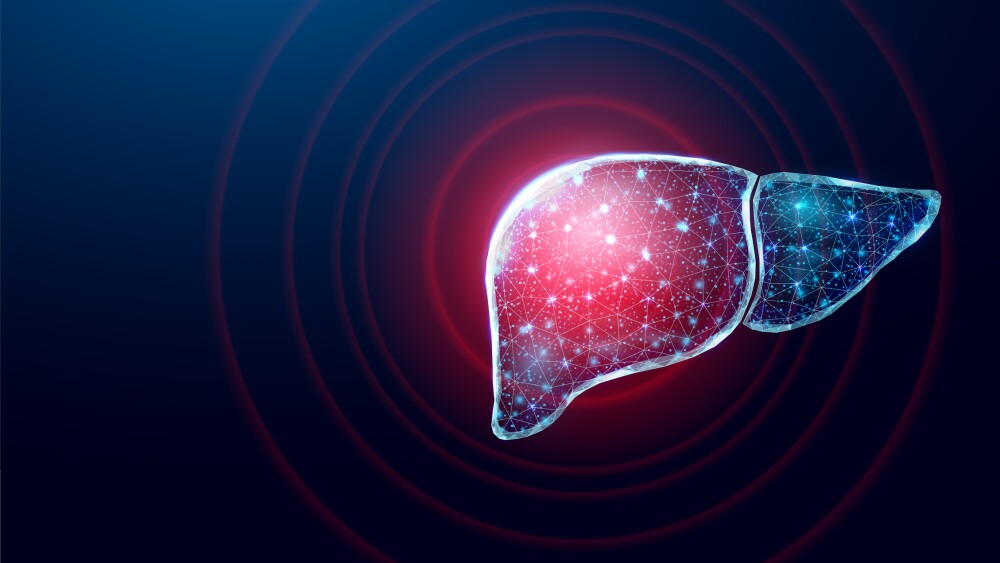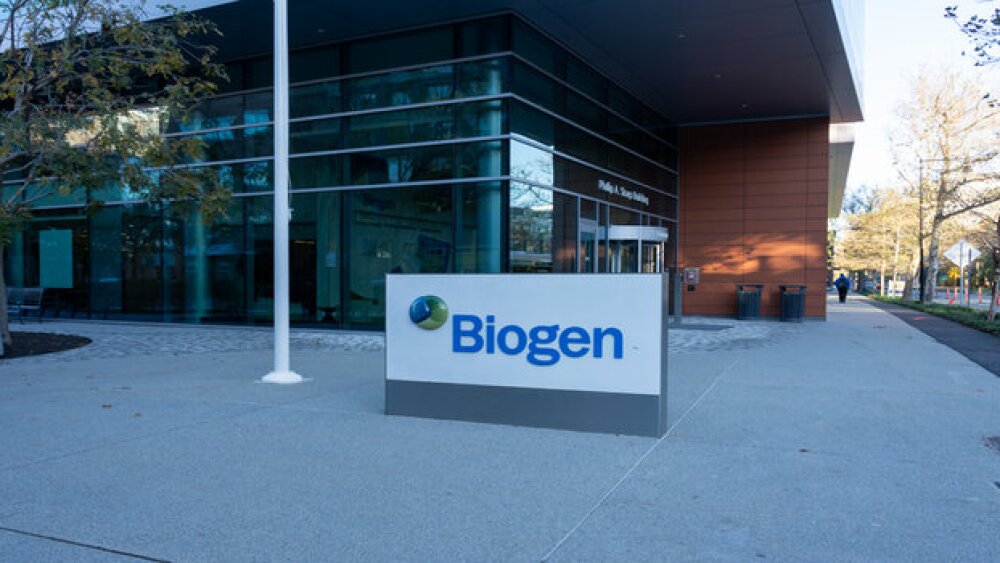Clene Inc. along with its subsidiaries “Clene” and its wholly owned subsidiary Clene Nanomedicine, Inc., a clinical-stage biopharmaceutical company dedicated to the treatment of neurodegenerative disease using nanotechnology to treat energetic failure, reported positive top-line results from the Phase 2 REPAIR clinical trials investigating the improvement of brain energetic metabolism in Parkinson’s disease and multiple sclerosis.
- Achieved a statistically significant increase in the Phase 2 program’s primary endpoint (mean change in brain NAD+/NADH ratio)
- CNM-Au8®, a gold nanocrystal suspension, significantly improved brain energetic metabolism
- Trial results demonstrate consistent brain target engagement in PD and MS patients
- Data provide clinical proof-of-mechanism and support the potential of CNM-Au8 to drive meaningful neurological functional improvements in the treatment of neurodegenerative disorders
SALT LAKE CITY, Aug. 05, 2021 (GLOBE NEWSWIRE) -- Clene Inc. (NASDAQ: CLNN) along with its subsidiaries “Clene” and its wholly owned subsidiary Clene Nanomedicine, Inc., a clinical-stage biopharmaceutical company dedicated to the treatment of neurodegenerative disease using nanotechnology to treat energetic failure, today reported positive top-line results from the Phase 2 REPAIR clinical trials investigating the improvement of brain energetic metabolism in Parkinson’s disease (PD) and multiple sclerosis (MS).
The objective of the REPAIR clinical trial program was to demonstrate the effects of Clene’s energy-enhancing nanotherapeutic, CNM-Au8®, on brain energy metabolites in two sister studies of patients with Parkinson’s disease (REPAIR-PD) and multiple sclerosis (REPAIR-MS). Patients were imaged using 31phosphorous magnetic resonance spectroscopy, an innovative non-invasive brain imaging technique, before and after 12 or more weeks of daily oral dosing with CNM-Au8. End of treatment results at week 12 were compared to baseline in 24 patients, 13 patients in REPAIR-PD and 11 patients in REPAIR-MS (all study participants with repeat imaging data).
The results for the primary endpoint, the mean change in the brain NAD+/NADH ratio (the ratio of the oxidized to reduced form of nicotinamide adenine dinucleotide), demonstrated a statistically significant increase by an average of 0.589 units (10.4%) following 12-weeks of treatment with CNM-Au8 (p=0.037, paired t-test), in the pre-specified integrated analysis of the REPAIR-PD and REPAIR-MS studies. Key secondary endpoints, mean change from baseline in the NAD+ fraction and NADH fraction of the total NAD pool, were concordant with the primary endpoint, demonstrating the NAD+ fraction increased (p=0.026), while the NADH fraction decreased (p=0.026). The individual results for these sister studies demonstrated consistent statistical trends toward improvement in the NAD+/NADH ratio with results of p=0.11 and p=0.14, for REPAIR-PD and REPAIR-MS, respectively.
Analyses of pre-specified exploratory endpoints demonstrated that homeostatic equilibrium was achieved across essential energetic metabolites, including adenosine triphosphate (ATP), intracellular phosphorous (Pi(in)), phosphocholine (PC), and phosphorylation potential index (β-ATP/ADP*Pi(in)). For these metabolites and indices, the percent change from baseline to the week 12 end-of-treatment was significantly inversely correlated with baseline levels, such that participants with relatively lower baseline levels demonstrated increases, and subjects with relatively higher baseline levels demonstrated a re-balancing effect with levels decreased to the baseline population mean. This relationship was observed both on an integrated basis across the two studies, and independently in both REPAIR-PD and REPAIR-MS, respectively, for: β-ATP (r2 = 0.82, p < 0.0001; r2 = 0.71, p = 0.0011), phosphorylation potential (r2 = 0.72, p = 0.0002; r2 = 0.68, p = 0.0019), PC (r2 = 0.78, p < 0.0001; r2 = 0.54, p = 0.0095), and Pi(in) (r2 = 0.42, p = 0.017; r2 = 0.48, p = 0.018). In addition, multiple other 31phosphorous energetic metabolites and indices showed consistent homeostatic changes, which will be presented in publications and at forthcoming scientific congresses.
Robert Glanzman, MD FAAN, Clene’s Chief Medical Officer, commented on the REPAIR results, “We believe the REPAIR program represents a critical breakthrough for Clene, demonstrating that catalytically active CNM-Au8 improves energy production and utilization in the brains of people with Parkinson’s disease and multiple sclerosis. Using a novel, noninvasive brain imaging approach, the study demonstrated that a key driver of cellular ATP energy production, the ratio of NAD+/NADH, was significantly increased in the brains of patients after three months of daily CNM-Au8 oral administration. Remarkably, the data also show a significant rebalancing of brain beta-ATP levels in these patients, a metabolic response to treatment that suggests improved ATP energy efficiency. Our next step will be to demonstrate that these brain energetic changes result in clinically meaningful results in patients with Parkinson’s disease and multiple sclerosis.”
CNM-Au8 treatment was well tolerated with all treatment emergent adverse events reported as predominantly mild and unrelated to study drug. There were no serious adverse events or treatment discontinuations related to adverse events in either study. As expected, the clinical endpoint of MDS-UPDRS in REPAIR-PD showed no worsening of clinical status across the study population (safety endpoint). The REPAIR-MS clinical endpoints included the modified MS functional composite (m)MSFC (exploratory endpoint), which showed consistent improvements across its four scales of symbol digit modalities test (SDMT), low contrast letter acuity (LCLA), nine-hole peg test (9HPT), and timed 25-foot walk test (T25FW).
Rob Etherington, Clene’s Chief Executive Officer, concluded, “Clene is a company driven to pioneer the development of cellular energy-enhancing nanotherapeutics for the treatment of neurodegenerative diseases. We believe the study results also strongly support Clene’s ongoing Phase 2 and Phase 3 clinical programs investigating how CNM-Au8’s neuro-reparative and neuroprotective properties may impact disease progression in amyotrophic lateral sclerosis, multiple sclerosis, and Parkinson’s disease, and may be broadly applicable to the treatment of neurodegenerative diseases.”
REPAIR-PD study results will be presented at the upcoming International Parkinson and Movement Disorders Society, MDS Virtual Congress 2021 meeting, September 17-22, 2021. REPAIR-MS results will be presented at the upcoming 37th Congress of the European Committee for Treatment and Research in Multiple Sclerosis, October 13-15, 2021.
The REPAIR program was conducted at the University of Texas Southwestern in collaboration with Dr. Richard Dewey, Jr., Professor in the UT Southwestern Medical Center Department of Neurology and Director of the Clinical Center for Movement Disorders (REPAIR-PD), Dr. Benjamin Greenberg, Professor in the UT Southwestern Medical Center Department of Neurology and Vice Chair of Clinical & Translational Research (REPAIR-MS), and Jimin Ren, PhD, Associate Professor at the UT Southwestern Advanced Research Imaging Center (both studies).
Clene thanks the study participants who directly supported this novel clinical research in the REPAIR program, the research dedication of the UT Southwestern principal investigators, Dr. Richard Dewey Jr. and Dr. Benjamin Greenberg, research colleagues at the Neuro Translational Research Center, and the advanced imaging techniques developed by Jimin Ren, PhD, of the UT Southwestern Advanced Research Imaging Center.
About REPAIR-PD and REPAIR-MS
REPAIR-MS and REPAIR-PD are Phase 2 single-center, active-only, sequential group studies examining the brain metabolic effects, safety, pharmacokinetics and pharmacodynamics of CNM-Au8 in patients who have been diagnosed with MS within 15 years of screening or in patients with PD who have been diagnosed within three years of screening. Investigators and participants are blinded to dose. Participants received orally delivered CNM-Au8 daily each morning for 12 weeks. Participants undergo 31P-MRS brain imaging scans to semi-quantitatively measure central nervous system (CNS) energetic metabolites at baseline, prior to administration of drug, and at the end-of-study following at least 12 weeks of exposure to CNM-Au8. The objective of these studies is to demonstrate target engagement for CNM-Au8 on CNS biomarkers related to energetics and neuronal membrane stability in patients with MS and PD. The studies are taking place at the University of Texas Southwestern Medical Center with a team of internationally recognized experts in brain imaging and treatment of disorders of the CNS. For more information see ClinicalTrials.gov Identifiers: NCT03993171 and NCT03815916.
About CNM-Au8®
Clene’s lead drug candidate, CNM-Au8, is an aqueous suspension of catalytically-active, clean-surfaced, faceted gold nanocrystals. Resulting from a patented manufacturing breakthrough, the catalytically active nanocrystals of CNM-Au8 drive critical cellular energy producing reactions in the brain that enable neurorepair and remyelination by increasing neuronal and glial resilience to disease-relevant stressors. CNM-Au8 crosses the blood-brain barrier and is not associated with the toxicities related to synthetic gold compounds or nanoparticles manufactured via alternative methods. CNM-Au8 has demonstrated safety in Phase 1 studies in healthy volunteers and has shown both remyelination and neuroprotective effects in multiple preclinical (animal) models. Preclinical data, both published in peer-reviewed journals and presented at scientific congresses, demonstrate that treatment of neuronal cultures with CNM-Au8 improves survival of neurons, protects neurite networks, decreases intracellular levels of reactive oxygen species and improves mitochondrial capacity in response to cellular stresses induced by numerous disease-relevant neurotoxins. Oral treatment with CNM-Au8 improved functional behaviors in rodent models of ALS, MS, and PD versus vehicle (placebo). CNM-Au8®, a gold nanocrystal suspension, is a federally registered trademark of Clene Nanomedicine, Inc.
About Clene
Clene, a clinical-stage biopharmaceutical company focused on neurodegenerative disease treatments, is leading the way by using nanotechnology to treat energetic failure, which underlies many neurological diseases. Clene has innovated a novel nanotherapeutic platform to create a new class of drugs. Clene’s lead drug candidate, CNM-Au8, is an aqueous suspension of catalytically-active, clean-surfaced, faceted gold nanocrystals that drive critical cellular energetic metabolism in the central nervous system (CNS). CNM-Au8 increases cellular energy production to accelerate neurorepair and improve neuroprotection. CNM-Au8 is currently being evaluated in a Phase 3 registration trial in amyotrophic lateral sclerosis (ALS), a Phase 2 trial examining disease progression via a novel electromyography technique in patients with early ALS, a Phase 2 trial for the treatment of chronic optic neuropathy in patients with stable relapsing multiple sclerosis (MS), and Phase 2 brain target engagement studies in patients with Parkinson’s disease (PD) and MS. Clene has also advanced into the clinic an aqueous solution of ionic zinc and silver for anti-viral and anti-microbial uses. The company is based in Salt Lake City, Utah with R&D and manufacturing operations in Maryland. For more information, please visit www.clene.com or follow us on Twitter, LinkedIn and Facebook.
Forward-Looking Statements
This press release contains “forward-looking statements” which are intended to be covered by the “safe harbor” provisions of the Private Securities Litigation Reform Act of 1995. Clene’s actual results may differ from its expectations, estimates and projections and consequently, you should not rely on these forward-looking statements as predictions of future events. Words such as “expect,” “estimate,” “project,” “budget,” “forecast,” “anticipate,” “intend,” “plan,” “may,” “will,” “could,” “should,” “believes,” “predicts,” “potential,” “might” and “continues,” and similar expressions are intended to identify such forward-looking statements. These forward-looking statements involve significant known and unknown risks and uncertainties, many of which are beyond Clene’s control and could cause actual results to differ materially and adversely from expected results. Factors that may cause such differences include Clene’s ability to demonstrate the efficacy and safety of its drug candidates; the clinical results for its drug candidates, which may not support further development or marketing approval; actions of regulatory agencies, which may affect the initiation, timing and progress of clinical trials and marketing approval; Clene’s ability to achieve commercial success for its marketed products and drug candidates, if approved; Clene’s ability to obtain and maintain protection of intellectual property for its technology and drugs; Clene’s reliance on third parties to conduct drug development, manufacturing and other services; Clene’s limited operating history and its ability to obtain additional funding for operations and to complete the licensing or development and commercialization of its drug candidates; the impact of the COVID-19 pandemic on Clene’s clinical development, commercial and other operations, as well as those risks more fully discussed in the section entitled “Risk Factors” in Clene’s Annual Report on Form 10-K, as well as discussions of potential risks, uncertainties, and other important factors in Clene’s subsequent filings with the U.S. Securities and Exchange Commission. Clene undertakes no obligation to release publicly any updates or revisions to any forward-looking statements to reflect any change in its expectations or any change in events, conditions or circumstances on which any such statement is based, subject to applicable law. All information in this press release is as of the date of this press release. The information contained in any website referenced herein is not, and shall not be deemed to be, part of or incorporated into this press release.
Media Contact
Gwendolyn Schanker
LifeSci Communications
(269) 921-3607
gschanker@lifescicomms.com
Investor Contact
Bruce Mackle
LifeSci Advisors, LLC
(929) 469-3859
bmackle@lifesciadvisors.com
Source: Clene Inc.




